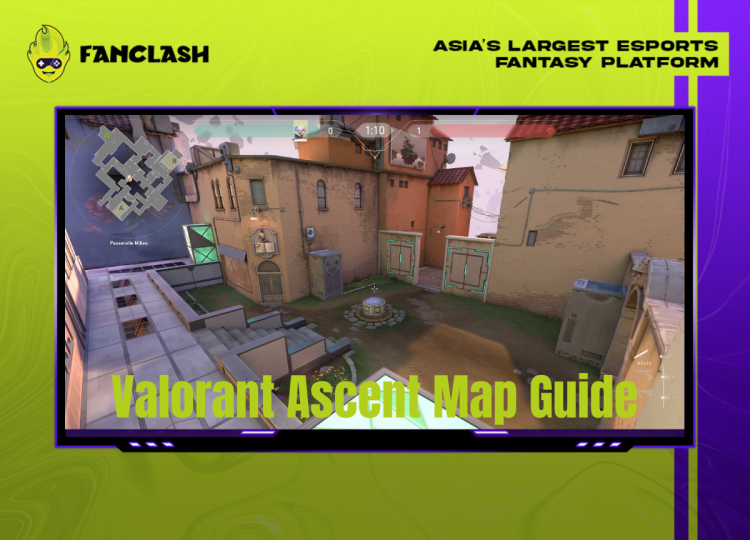Valorant is a popular tactical first-person shooter game that has overtaken the gaming world. It is a game that demands precision, strategy, and teamwork, and one of the most critical aspects of the game is map knowledge. In this article, we will discuss the Ascent map, one of the most popular maps in Valorant. We will cover the callouts, strategies, and positions you need to know to dominate your opponents on this map.
Callouts
Callouts are essential to playing Valorant Ascent, as they allow players to communicate with their teammates and coordinate their actions. In Valorant, callouts are specific terms or phrases used to describe different areas of the map and are an integral part of gameplay. By using the right callouts, players can quickly and efficiently communicate information to their teammates, which can help them gain an advantage over their opponents.
There are several callouts that players need to be familiar with to be successful in Valorant. Some of the most important ones include the following:
- A Site: A site is one of the two bomb sites on the map, located on the left side of the map. Some of the most important callouts for the A site include A Main, A Heaven, and A Ramp.
- B Site: The B site is the other bomb site on the map, located on the right side of the map. Some of the most important callouts for the B site include B Main, B Heaven, and B Ramp.
- Mid: Mid is the area of the map that connects the A and B sites, and it is an important area to control. Some of the essential callouts for Mid include Mid Window, Mid Cubby, and Mid Market.
- Spawn: Spawn is the area of the map where players spawn at the beginning of the round. It is essential to be familiar with each team’s spawn’s callouts, as they can coordinate attacks and defences.
- Chokepoints: Chokepoints are narrow and easy-to-defend areas of the map. Some of the most important choke points include A Main, B Main, and Mid.
Knowing the right callouts can differentiate between a successful and unsuccessful round in Valorant. By using clear and concise callouts, players can quickly and efficiently communicate important information to their teammates. This can help them coordinate attacks, defend bomb sites, and make split-second decisions that can turn the game’s tide.
Strategies
Strategies are essential to playing Valorant Ascent, as they allow players to coordinate their actions and gain an advantage over their opponents. In Valorant, strategies involve developing a plan of attack or defence that considers the strengths and weaknesses of each player on the team, as well as the layout of the map and the objectives of the game.
Players can use several strategies on the Valorant map, depending on the situation and the game’s objectives. Some of the most common methods include:
- Split Push: In a Split Push strategy, the team splits up and attacks multiple map areas at once. This can effectively confuse and overwhelm the enemy team, as they will have to divide their resources to defend against each attack.
- Bait and Switch: In a Bait and Switch strategy, one or more players on the team act as bait, drawing the enemy team’s attention while the rest of the team sets up an ambush or attack from a different angle. This can be an effective way to catch the enemy team off guard and gain an advantage.
- Fake Out: In a Fake Out strategy, the team pretends to attack one area of the map while actually attacking a different area. This can effectively trick the enemy team into wasting resources defending the wrong area, giving the attacking team an advantage.
- Hold and Rotate: In a Hold and Rotate strategy, the team focuses on defending one area of the map while rotating players to other areas as needed. This can effectively maintain control of the map and prevent the enemy team from gaining ground.
- Split Defense: In a Split Defense strategy, the team splits up and defends multiple map areas at once. This can effectively prevent the enemy team from gaining ground and keep them on the defensive.
Positions
There are several key factors that players need to consider when choosing their position in Valorant. These factors include:
- Line of Sight: Players need to choose a position that provides a clear line of sight to key map areas, such as chokepoints or bomb sites. This can help them detect enemy movements and prevent the enemy team from gaining ground.
- Cover: Players must choose a position that provides cover, such as walls or crates, to protect them from enemy fire. This can help them stay alive longer and prevent the enemy team from getting an easy kill.
- Mobility: Players must choose a position that allows them to move quickly and easily to other areas of the map as needed. This can help them respond quickly to enemy movements and support their teammates.
- Coordination: Players need to coordinate their positions with their teammates to ensure they cover all key areas of the map and prevent the enemy team from gaining ground. This can involve communicating their positions and adjusting their positioning based on the enemy team’s actions.
Also Read: Top 5 Best Esports Games for Aspiring Gamers







